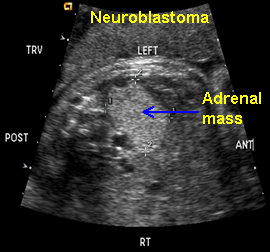
In rare cases, an adrenal adenoma may cause the adrenal gland to secrete higher-than-normal levels of the sex hormones estrogen or testosterone, which may lead to symptoms like enlarged breasts in males or excess facial and/or body hair in females. When higher levels of aldosterone are secreted, a person may develop primary aldosteronism or Conn syndrome, characterized by difficult-to-control hypertension, and in some cases, severe hypokalemia (low potassium levels). When an adrenal adenoma causes the adrenal gland to secrete higher levels of cortisol, for example, a person may develop hypercortisolism, or Cushing’s syndrome, which causes excessive weight gain, abnormal fat distribution, abdominal striae (stretch marks), and osteoporosis. In some cases, higher levels of hormones can lead to serious conditions.

But if the tumor’s presence causes the adrenal gland’s cortex to secrete increased levels of certain hormones, symptoms may begin to develop and the tumor is considered to be functional. That’s because the tumor doesn’t cause any changes to hormone secretion.

The outer portion ( cortex) secretes hormones such as cortisol, which helps to control metabolism, suppress inflammation, and manage stress-related responses aldosterone, which controls the balance between salt and water in the body and sex hormones, including estrogen and androgens like testosterone.Īs mentioned above, a non-functional adrenal adenoma does not typically cause symptoms.The inner portion ( medulla) secretes catecholamines (i.e., adrenaline), which help to control a person’s heart rate, blood pressure levels, perspiration, and stress-related responses.Each portion of an adrenal gland secretes different hormones: The glands are part of the endocrine system and are responsible for secreting hormones. An adrenal adenoma is a type of benign (non-cancerous) tumor that is located in an adrenal gland.Īn adrenal gland is a small organ that is located above each kidney.


 0 kommentar(er)
0 kommentar(er)
